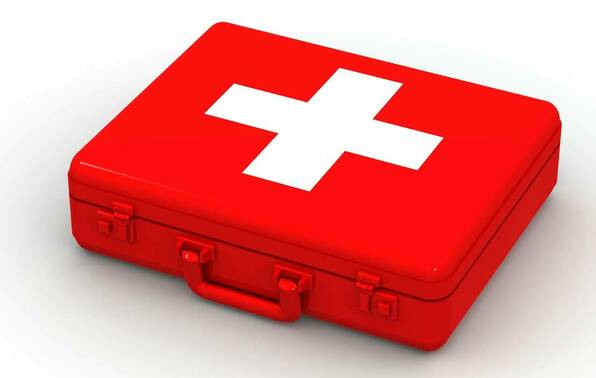How do ACC payments work for injury consults at your doctor’s?

A query from a Consumer NZ member sparked our investigation into how GPs process ACC payments. While you might think ACC payments come off your consultation fee, that’s not quite how it works.

Consumer NZ member Glenn got in touch with us. He was confused about how his GP, who works at a Tend Waltham Medical Centre, Christchurch, applied Glenn’s ACC payment.
Glenn had a rib injury and went to his local GP to get treatment. He filled out an ACC claim form, which was accepted.
Since the ACC claim was accepted, Glenn thought the ACC payment would be taken off his $66 consultation fee, but this wasn’t the case. He was charged the same amount as a 15-minute consultation.
Glenn thought this didn’t sound right, and we weren’t sure how it worked either. So, we decided to find out how ACC payments work at medical centres.
ACC payments for GP visits
ACC payments to GPs are for accident-related injuries. The rules about treatments and how much ACC pay are set down in regulations.
For GP consultations for injuries, ACC pays the GP $41.14.
Even though ACC is paying towards the treatment cost, the GP can charge a fee as well. This is known as a co-payment. Most GPs will charge some kind of co-payment.
ACC doesn’t have any control over the cost of the co-payment. However, it is expected that clients are made aware of any co-payment before receiving services.
So, when Glenn had to pay $66 for his ACC consultation, that consultation actually cost $107.14.
GP fees explained
We got in touch with Tend’s head office and asked it to clarify how it applies ACC payments.
It confirmed it charges ACC consultations at the same rate as a general consultation.
“These fees do not cover the full cost of the care received,” a spokesperson told us.
When you go to a GP and pay for a normal consultation, you are not paying the full cost of that visit either. The actual cost of a GP visit is over $100. The practice receives funding from the government agency Health New Zealand Te Whatu Ora towards the cost.
The funding is based on a ‘capitation fee’. A capitation fee is a set payment to each GP. It is determined by:
the number of patients on the GP’s books
how often those patients could be expected to visit the GP in a year
the demographics of the area where the GP’s practice is situated.
The funding for ACC consultations doesn’t come from the capitation fee. This is because treating accidents isn’t seen as a GP’s day-to-day health care role. Instead, it comes from ACC.
Tend also explained that ACC claims generate more paperwork than a standard visit generates.
“So even though the fee you pay looks the same, you’re not being charged twice. You’re just seeing where the funding comes from – injury care comes from ACC, and non-accident care comes from Te Whatu Ora,” Tend said.
Going to a hospital emergency department instead
If it’s an emergency, dial 111 and ask for an ambulance.
If you visit a hospital’s emergency department, the service will be free. However, patients are ranked depending on the urgency of their need for treatment. So, if your injury isn’t urgent, you’re likely to have a lengthy wait.
If you don’t want to wait, there are other options to access health care.
ACC through other health providers
GPs aren’t the only health practitioners who receive ACC funding and can charge a co-payment. Physiotherapists, osteopaths, chiropractors, to name a few, also have additional charges. And they can advertise the price of ACC consults in many different ways.
Angela Young, the chair of Osteopaths New Zealand, explained that, “… osteopaths often display their full consultation fee and then apply the ACC subsidy as a deduction. This provides transparency for patients and reflects the reality that ACC funding only partially contributes to the overall cost of care.”
Kirsten Davie, president and chair of Physiotherapy New Zealand, explained that ACC doesn’t cover the full cost of physiotherapy. Instead, it contributes towards treatment, meaning patient co-payments are often necessary.
Physiotherapy clinics operate as independent businesses and therefore set their own fees balancing care and cost carefully. They are deeply committed to their patients and do their best to keep costs as low as possible, Davie said.
Podiatry NZ told us that it’s important health providers are upfront with clients about the part-payment required with ACC appointments.
“Podiatrists often apply co-payments because the funding from ACC usually doesn’t cover the cost of providing treatment,” a spokesperson said.
In summary
The way ACC subsidises injury consults varies across different medical and allied health professionals. This can lead to some confusion about how payments are applied.
I went back to our Consumer member Glenn to share what I had learned. While he understood my findings, he was concerned prices at the GP would put people off getting treatment.
“The sole reason ACC exists is to reduce the cost of injuries to the injured,” he said.
The way some GP offices display pricing can give the appearance the costs aren’t being reduced.
Rather than a reduction in costs, in reality, GPs are accessing different government funding pots for different types of treatment.

Compare health insurance policies
Use our interactive database to compare health insurance cover and benefits for the policies in our survey.
Member comments
Get access to comment